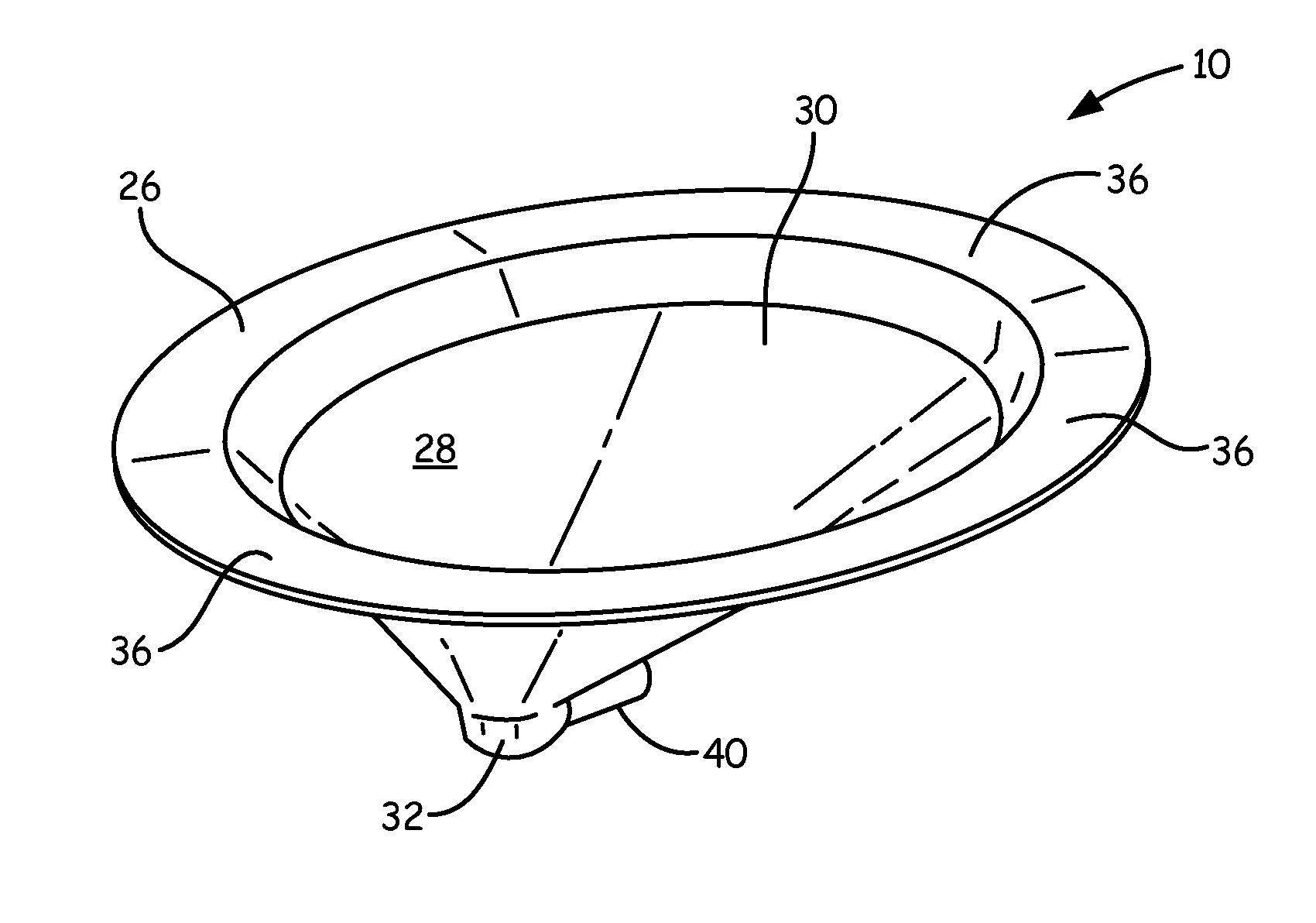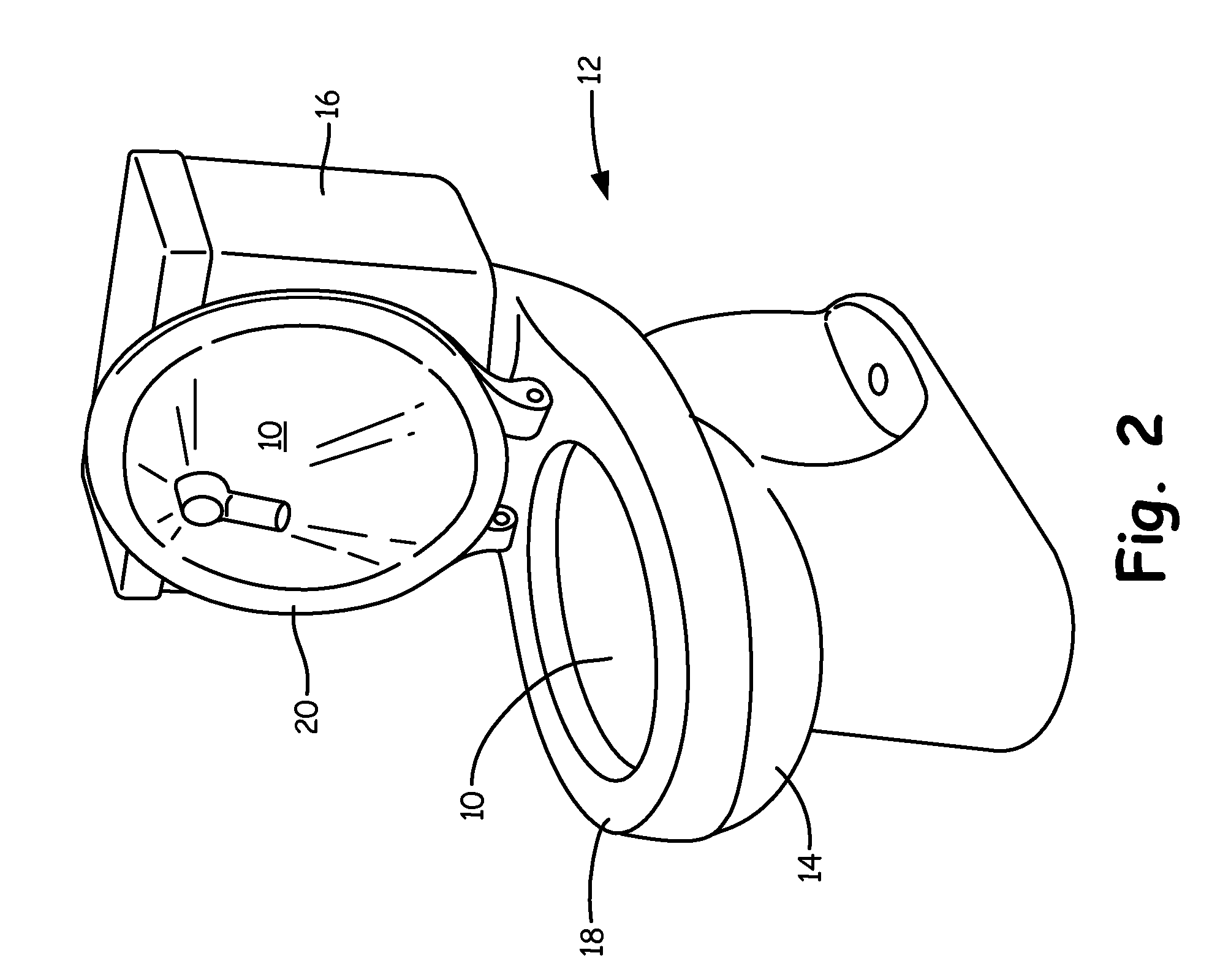Urine Sample Collection Device
a collection device and urine technology, applied in medical science, surgery, vaccination/ovulation diagnostics, etc., can solve the problems of difficulty in urinating upon demand, troublesome mechanics, and difficulty in collecting urine samples from children or elderly or disabled patients, and achieve convenient collection, convenient removal from the toilet bowl, and easy installation
- Summary
- Abstract
- Description
- Claims
- Application Information
AI Technical Summary
Benefits of technology
Problems solved by technology
Method used
Image
Examples
example i
[0064]A four-inch-diameter substrate ring was cut from 0.060-inch-thick ABS plastic to provide a perimeter support for the urine flow barrier shield.
[0065]ABS plastic film 0.005 inch thick was rolled around a ½-inch steel rod with aluminum foil separating each wrap of the film. The rolled film assembly was then baked at 200° F. for 15 minutes to create a rolled film memory retention layer that will return to its rolled stated when released from its flat configuration.
[0066]3M 77 spray adhesive sourced from 3M Corporation of St. Paul, Minn. was applied to the bottom surface of an absorbent layer made from a single-ply paper towel, which was then laid flat, adhesive side up. The rolled film memory retention layer was then unrolled with its top surface pressed onto the adhesive-coated bottom surface of the absorbent layer with the resulting two-ply cassette pressed under the weight of a flat board to allow the adhesive to completely dry.
[0067]A pattern of triangular “leaves” was laid o...
PUM
 Login to View More
Login to View More Abstract
Description
Claims
Application Information
 Login to View More
Login to View More - R&D
- Intellectual Property
- Life Sciences
- Materials
- Tech Scout
- Unparalleled Data Quality
- Higher Quality Content
- 60% Fewer Hallucinations
Browse by: Latest US Patents, China's latest patents, Technical Efficacy Thesaurus, Application Domain, Technology Topic, Popular Technical Reports.
© 2025 PatSnap. All rights reserved.Legal|Privacy policy|Modern Slavery Act Transparency Statement|Sitemap|About US| Contact US: help@patsnap.com



